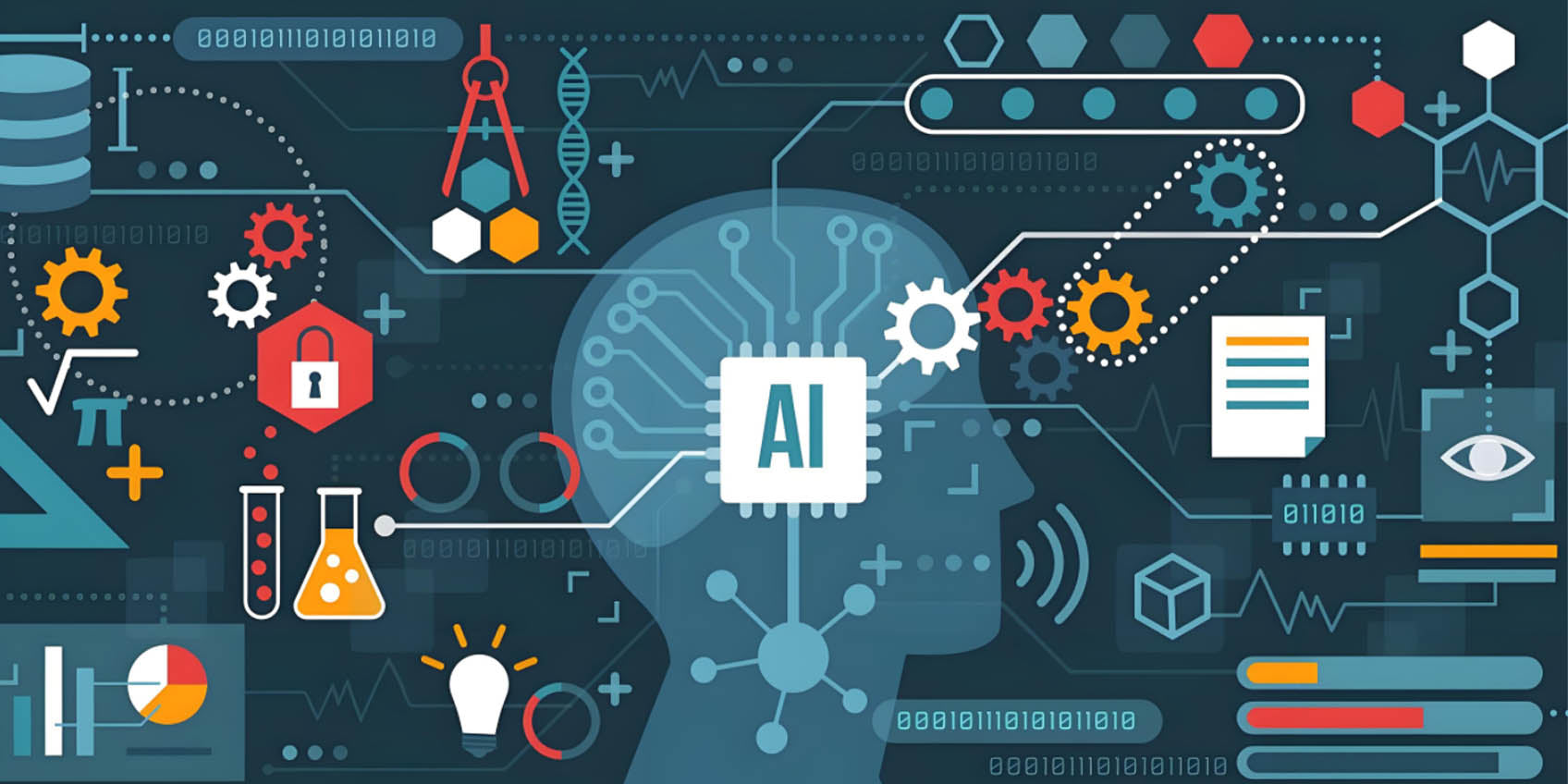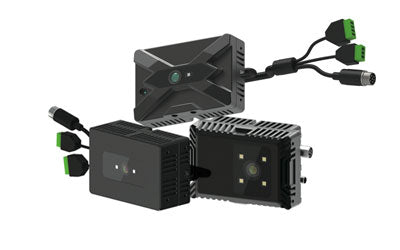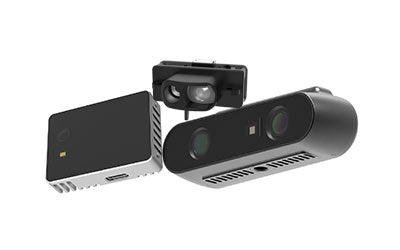Die Rolle und Zukunft von KI und ToF-Technologie in der Bildung

Was ist ToF-Technologie?
Die Time-of-Flight-Technologie (ToF) ist ein Tiefenmessungsverfahren, das die Entfernung berechnet, indem es die Zeit misst, die ein Lichtimpuls vom Sensor zu einem Objekt und zurück benötigt. Diese Technologie liefert schnelle und präzise Tiefendaten und wird häufig in der 3D-Bildgebung , Gestenerkennung, Hinderniserkennung und Umweltsensorik eingesetzt. Die ToF-Technologie spielt eine entscheidende Rolle in Augmented Reality, autonomem Fahren, Roboternavigation und Unterhaltungselektronik und wird für ihre effiziente Entfernungsmessung und Echtzeitleistung geschätzt.
Wie verändern KI- und ToF-Technologie die Bildung?
Mit der rasanten Entwicklung von Künstlicher Intelligenz (KI) und Time-of-Flight-Technologie (ToF) halten diese fortschrittlichen Innovationen zunehmend Einzug in den Bildungssektor und bieten Lehrkräften und Schülern neue Lern- und Lehrerfahrungen. Welche Veränderungen können wir durch die Kombination von KI und ToF-Technologie im Bildungsbereich erwarten? Wie tragen sie zum personalisierten Lernen bei? Wie werden diese Technologien die Bildungslandschaft in zukünftigen Klassenzimmern verändern?
1. Wie KI und ToF die Interaktion im Klassenzimmer verbessern
Traditionelle Interaktionen im Klassenzimmer sind oft zeitlich und räumlich begrenzt. Die Integration von KI in die ToF- Technologie überwindet diese Barrieren. ToF- Sensoren erfassen das Verhalten der Schüler in Echtzeit, z. B. Handheben, Aufstehen und Interagieren, während KI deren Engagement und Aufmerksamkeit analysiert. Lehrkräfte können diese Daten nutzen, um ihre Unterrichtsmethoden dynamisch anzupassen, den Unterricht zielgerichteter und interaktiver zu gestalten und die Lerneffizienz zu verbessern.
2. Wie KI und ToF personalisiertes Lernen ermöglichen
Personalisiertes Lernen ist ein wichtiger Trend in der zukünftigen Bildung, und die Kombination von KI und ToF- Technologie ist entscheidend, um dieses Ziel zu erreichen. ToF- Sensoren können die Lerngewohnheiten der Schüler, wie Sitzhaltung und Blickrichtung, überwachen, während KI-Systeme diese Daten analysieren, um individuelle Lernpläne und Inhaltsempfehlungen zu erstellen. Stellt das System beispielsweise fest, dass einige Schüler mit bestimmten Themen Schwierigkeiten haben, kann KI geeignetere Lernressourcen und Übungsfragen vorschlagen, um ihnen zu helfen, das Wissen besser zu verstehen.
3. Wie ToF die Unterrichtsumgebung optimiert
KI- und ToF- Technologie können zudem die Unterrichtsumgebung optimieren und so die Unterrichtsqualität verbessern. ToF- Sensoren überwachen Umgebungsfaktoren wie Licht, Temperatur und Lärm, und KI analysiert und passt diese Bedingungen an, um eine optimale Lernumgebung zu gewährleisten. Intelligente Anpassungssysteme können Beleuchtung und Temperatur automatisch an die Reaktionen der Schüler anpassen und so einen angenehmeren und konzentrierteren Lernraum schaffen.
4. Wie KI und ToF-Technologie die Bewertung verändern
Herkömmliche Bewertungsmethoden basieren oft auf Prüfungen und Aufgaben, die den Lernprozess der Schüler nicht vollständig widerspiegeln. Die Kombination aus KI und ToF- Technologie ermöglicht die Echtzeiterfassung der Leistungen der Schüler im Unterricht, beispielsweise der Häufigkeit der Beantwortung von Fragen und der Teilnahme an Diskussionen, und liefert durch Big-Data-Analyse umfassende Bewertungsberichte. Diese ganzheitliche Bewertung kann Lehrkräften helfen, Unterrichtsprobleme frühzeitig zu erkennen und Schülern wissenschaftlich fundiertere Lernberatung zu bieten.
5. Wie KI und ToF virtuelles und hybrides Lernen unterstützen
Mit dem Aufkommen virtueller und hybrider Lernmodelle bietet die Integration von KI- und ToF -Technologie eine starke Unterstützung für diese neuen Lehransätze. In virtuellen Klassenzimmern können ToF- Sensoren die Bewegungen und Mimik der Schüler erfassen, und KI kann deren emotionalen Zustand und Konzentration analysieren. So können Lehrkräfte die Lernbedingungen auch aus der Ferne besser verstehen. Darüber hinaus ermöglicht ToF- Technologie die präzise Positionierung von AR/VR-Geräten und bietet so realistische Erlebnisse für virtuelle Experimente und simulationsbasierten Unterricht.
6. Wie KI und ToF die Sicherheit auf dem Campus gewährleisten
Die Sicherheit der Schüler hat im Schulmanagement höchste Priorität, und KI- und ToF -Technologie spielen dabei eine wichtige Rolle. ToF- Sensoren können die Aktivitäten auf dem Campus in Echtzeit überwachen, und KI kann ungewöhnliches Verhalten wie Herumlungern oder Versammlungen analysieren, um automatisch Alarme auszulösen und die Sicherheit auf dem Campus zu gewährleisten. Insbesondere in Hochrisikobereichen wie Laboren kann ToF die Standorte und Aktivitäten der Schüler präzise überwachen und so die Sicherheit der Experimente gewährleisten.
7. Wie ToF und KI die Sonderpädagogik unterstützen
KI- und ToF- Technologie bieten auch in der Sonderpädagogik großes Potenzial. ToF- Sensoren können subtile Bewegungen und emotionale Veränderungen bei Schülern erfassen und so Lehrkräften helfen, die Bedürfnisse von Schülern mit besonderen Bedürfnissen besser zu verstehen. In Kombination mit KI-Analysen können diese Daten personalisierte Unterrichtsvorschläge liefern, die Schülern mit Sonderpädagogik helfen, sich besser in den Unterricht zu integrieren und ihr Lernerlebnis zu verbessern.
Wie gestalten KI und ToF-Technologie die Zukunft der Bildung?
Die Integration von KI und ToF -Technologie verändert die Bildungsmethoden und führt zu beispiellosen Innovationen. Ob in der Interaktion im Klassenzimmer, im personalisierten Lernen, in der Leistungsbewertung, der Sicherheit auf dem Campus oder in der Sonderpädagogik – diese Technologien bieten enormes Potenzial.
Mit dem technologischen Fortschritt werden KI und ToF immer stärker in das Bildungssystem integriert und schaffen intelligentere und effizientere Lernumgebungen für Schüler und Lehrer. Durch kontinuierliche Erforschung und Anwendung dieser Technologien werden sie ein personalisierteres, interaktiveres und sichereres Bildungserlebnis ermöglichen.
Passende Produkte:
Synexens Industrielle 3D-Kamera mit 10 m TOF-Sensor für den Außenbereich, Tiefenmessung_CS40 Pro
„CS40 Pro“ und „Depth Sensor_CS30“ sind beide sehr gut geeignet
Unser professionelles technisches Team, spezialisiert auf 3D-Kamera-Entfernungsmessung, steht Ihnen jederzeit zur Verfügung. Egal, ob Sie nach dem Kauf Probleme mit Ihrer TOF-Kamera haben oder Fragen zur TOF-Technologie haben, kontaktieren Sie uns jederzeit. Wir legen Wert auf hochwertigen technischen Kundendienst und ein optimales Benutzererlebnis, damit Sie unsere Produkte unbesorgt kaufen und nutzen können.
-
Veröffentlicht in
CS40P






